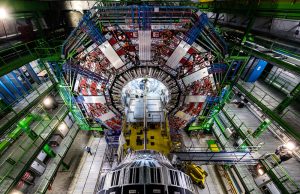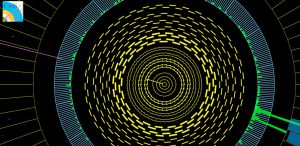Supersymmetry is in crisis. After being the favored extension of our standard model for decades, the theory is now gradually breaking the foundation. Because experimental findings have refuted a large part of the classic, simple variants of supersymmetry – the SUSY particles they postulate simply do not exist.
Looking for new ideas
But what remains? Does this mean the end of supersymmetry? According to some physicists, that is the case. You see the attempts to find a solution after all, like a desperate beating on a long dead horse. These include the physicist Mikhail Shifman, who himself did intensive research on supersymmetry for a long time. In his opinion, it is time to say goodbye to supersymmetry: “We have to stop blindly searching the parameter space and start rethinking and developing new ideas,” he writes in an article.
But what would the alternative be? So far there are hardly any other approaches that have come along as far and which can explain all the gaps and problems of the Standard Model in a similarly elegant way. “I’m certainly not someone who believes that supersymmetry has to be right at any cost – but I can’t think of anything better,” said Stephen Martin of Northern Illinois University in Quanta Magazine, describing the dilemma of modern physics.
… or just new search methods?
But there are also physicists who do not give up supersymmetry. According to them, there are two possible explanations for why no SUSY particles have been found so far. One would be that these particles are far heavier than the simple supersymmetry models predict. Even the LHC would therefore still be too weak to prove it.
However, these models have one major flaw: in order for such superheavy SUSY particles to be able to fill the gaps in the Standard Model, their features and interactions must meet a number of additional conditions. Such “fine-tuning”, however, destroys the very simplicity and elegance that made the supersymmetry so convincing.
“Hidden” supersymmetry
A second explanation would be that the SUSY particles are exactly where they should be, but have evaded detection due to their behavior. Specifically, this would be possible, for example, if these particles were far more stable than expected. They would then not turn into detectable decay products in the detectors of the LHC, for example, but could be thrown several meters to thousands of kilometers from the point of collision before they decay. However, this would then have to be noticeable in the collision products as a lack of energy – and this has not yet been proven either.

It is also conceivable that the SUSY particles decay quickly, but into secondary particles that are different from what was expected. “Some modified versions of supersymmetry predict that the SUSY particles can decay into particles of the Standard Model,” explain physicists from the CMS collaboration at CERN. Because these additional particles do not differ in their characteristics from the vast amounts of normal collision products, they are difficult to separate from the “background noise”. “That would explain why previous searches have not found anything,” the researchers say.
Promising discrepancy in the detector
In fact, a group of physicists from the CMS collaboration at Fermilab in the US has already started looking for this “hidden” supersymmetry. “Our LPC team uses a machine core technique with two competing neural networks to reveal the subtle differences between possible signals and the background events,” explains Jim Hirschauer from Fermilab. “We then use this data to separate the few interesting collisions that indicate a hidden supersymmetry from the billions of remaining collisions that the LHC produces per second.”
In the first manhunt for this, the CMS researchers first examined the events in which two supersymmetrical top squarks disintegrate into two normal top quarks and a number of other particles. In the LHC data, they actually encountered a slight abnormality: In some collisions, slightly more top Quark jets were created than the standard model predicts. So far, however, the significance of this deviation is only 2.8 standard deviations, as the CMS team reports. That is still too little to be taken as a clear indication or discovery.
“This slight discrepancy is still very exciting,” explain the physicists. “We are now carrying out follow-up studies to find out whether it is just a statistical fluctuation or the first sign of new physics.” Detection capabilities of the particle accelerator have been optimized again “If the hidden supersymmetry really exists, then the new data will provide an even more significant result,” the CMS team hopes.
Only a matter of time?
Other physicists don’t see supersymmetry at the end either. Until all search opportunities have been exhausted, they are not prepared to declare the theory dead. As a physicist, one is used to the fact that some things take a little longer. After all, it took 25 years from the theoretical prediction to the detection of neutrinos, about 50 years for the Higgs boson and almost a century for the gravitational waves.
“Either supersymmetry is the answer or not, but the only way to find out is to look further,” says Elodie Resseguie of the Lawrence Berkeley National Laboratory.
–


